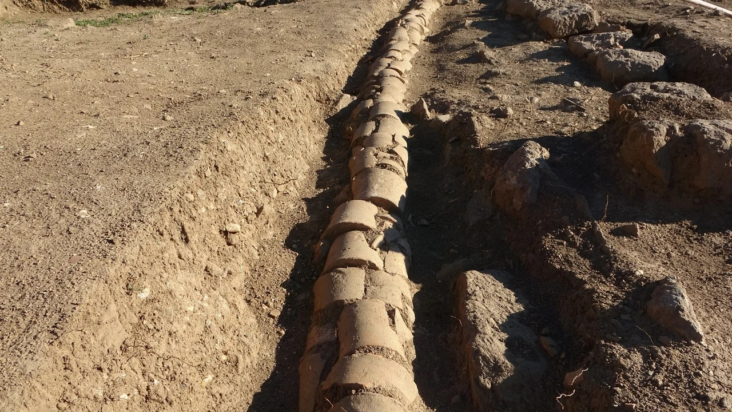Archaeologists discovered a 100-meter-long system of ducts in a fortress built by Alexander the Great’s soldiers, however they realized that the ducts were only 500 years old, while the castle is more than 2,300 years old.
Bitlis Fortress is located in eastern Turkey and is known as the castle of Alexander the Great. The monument continues to reveal its historical significance as the continuous excavations carried out over the last 20 years have revealed the specific water supply system.
Built by the “order” of Alexander the Great, in 312 BC. the castle is still one of the most important historical sites in the region. This year’s excavations focused on the area of the palaces. There archaeologists discovered ancient pipes about 100 meters long.
The excavation team, led by Dr. Yunus Emre Karasu from Bitlis Eren University, confirms that at one time, these pipes carried water from the Duav spring. “There are many hypotheses regarding the source of the clean water in the castle. Now, thanks to our excavations, we have scientific proof.” Karasu explains.

Finds and structures reveal the wealth of the era
The water ended up in cisterns near the palace and the historic Sinan Bey Hamam, a bath built between 1530 and 1540. Since the 20-year excavation in Turkey, important artifacts and structures have come to light.
In addition to the water supply system, excavations have revealed a wealth of artifacts that offer insights into the lives of the people who lived in the castle. Coins, stone pipes, ceramics, lamps, ceramic fragments and various objects of bone, metal and glass.
The artifacts suggest the rich material culture of the period and enhance the historical understanding of the role of the Bitlis fort in the region. Excavations have been started since 2004, under the auspices of the University of Pamukkale, while work continued until 2015, under the auspices of the Van Yuzuncu Yil University, in Van, Turkey.
Today the management of the Ahlat museum oversees the project, which is financed by the Eren Holding network of companies, from 2023.
Ali Fuat Eker, regional director of culture and tourism, emphasizes the importance of funding. “We have completed the first year of the five-year funding agreement, accelerating the excavation process,” explains Eker.

The restoration of the fortress and the reception of visitors
The excavation team consists of five experts and 15 workers, under the auspices of Ahlat Museum and Bitlis Eren University. Its goal is to complete the excavations and restoration within the next three to four years.
“Swe are working to complete the excavations and the restoration of the structures, with the assistance of the Ministry of Culture and Tourism. When we are finished, the castle will be open to visitors”Eker said.
The Bitlis fortress is located in a strategic location overlooking the homonymous river. It remains an important archaeological site, continuing to offer new insights into the historical infrastructure and daily life of the past.

Source: www.enikos.gr


